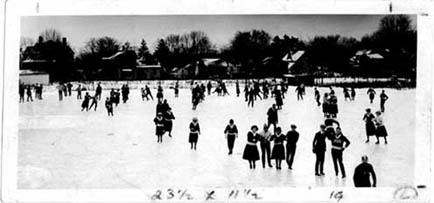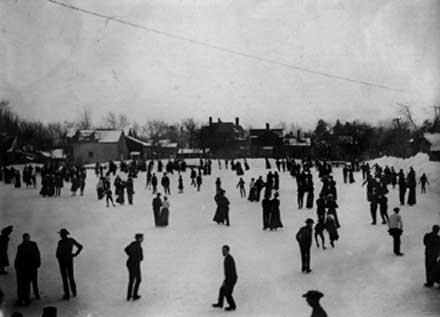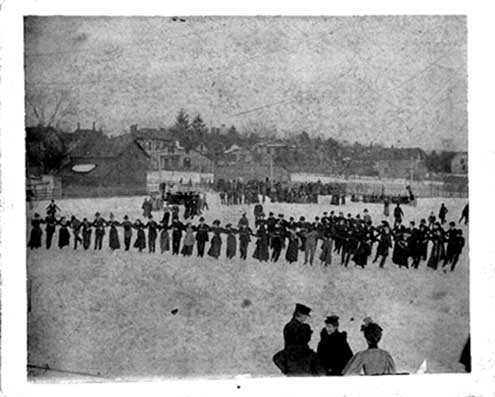
February 1922, Gayters Skating Rink
Mary Katherine Wright talks about a skating party over the present Ohio Gas Office
Marvl Fields talks briefly about coasting down Main Street as a popular pastime
Adora Godette has no transcript or tape of her interview available, but if it ever becomes so, according to the index of her interview she speaks about discrimination at the Elyria Skating Rink as well as about Gayterís
Grace Harlow talks about Gayterís on East Lorain Street, across from the Econowash. She tells of how kids could get free passes when they would skate, shovel in hand and re-surface the freshly poured ice. She mentions the African American owner and begins to paint a picture of the scene by describing a shanty with a stove.
May Hall talks about the economics of sharing skates and the importance a role of stone sidewalks in the enjoyment of roller-skating on city streets.
Marion Bradley Kelly talks about Gayterís skating rink which was at 112 E. Lorain Street. She describes the shanty, calling it a warming house. Her story tells of how often times the gloves that had been placed on the wonderful stove would catch fire, but how no one seemed to mind or notice. You canít really blame them, if youíve ever experienced the blissful glow of skating in your soul.

From the album of Raymond W. Hayward 1905-1907, Gayters Skating Rink
Otis McKee talks about the ice skating at Gayterís which is where the apartment building is down there between Park and Pleasant on E. Lorain and another just south of the corner of E. College and Park.
Bob Thomas tells the tale of the second floor balcony of the warming house of Gayterís where there were no windows and a live band would play music. He also talks about not having enough to pay for skating and going in back of Tank Hall and crawling under the fence into Gayterís pond. The tradeoff according to Mr. Thomas was that in doing so, one had to be sure to avoid the skating house where one would be identified as a non-paying customer, so him and his friends would skate till they froze and then go home.
Patty Bailey Stetson talks about re-surfacing the ice and how she believed Gayterís cost10 cents a day all day and was closed sometime in the early 1940ís. She seemed to recall the College and the City of Oberlin both lending financial aid to the rink. She also remembered that on days when Gayterís was going to be open, because of proper water and weather conditions, a sign would be posted on the corner of Main Street and East College, where the Oberlin Savings Bank was once located. I believe one of the causes of the problems of available sources on this topic is the word of mouth nature of most of these places, at least in terms of advertisement.

Iris' Skatng Rink